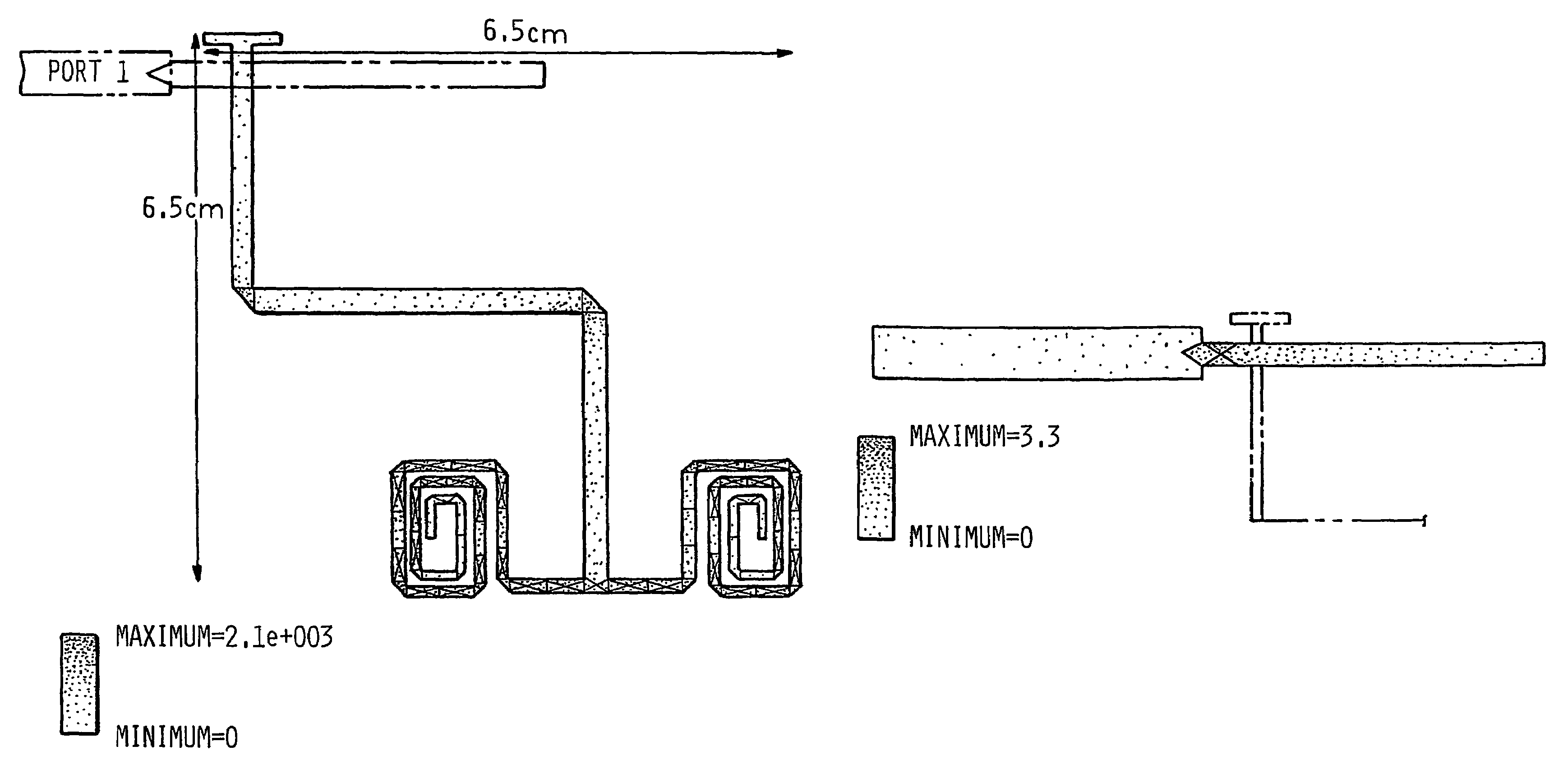Slot antenna
a slot antenna and antenna technology, applied in the direction of slot antennas, antenna feed intermediates, antennas, etc., can solve the problems of low power characteristics, low power characteristics of these types of antennas, and inability to meet the needs of small antennas, etc., to achieve low power, low power, and low power characteristics
- Summary
- Abstract
- Description
- Claims
- Application Information
AI Technical Summary
Benefits of technology
Problems solved by technology
Method used
Image
Examples
example i
[0047]FIGS. 1A and 1B respectively, show the electric current distribution on the microstrip feed and the magnetic current distribution on the slot of the compact UHF antenna designed to operate at 600 MHZ. An ordinary FR4 substrate with thickness of 3 mm (120 mil.) and dielectric constant ∈r=4. PiCASSO™ software was used for the simulations of this antenna. The microstrip feed is constructed from two sections: 1) a 50Ω line section, and 2) an open-ended 80Ω line. The 80Ω line is thinner which allows for compact and localized feeding of the slot. The length of this line is adjusted to compensate for the reactive component of the slot input impedance. Noting that the slot appears as a series load in the microstrip transmission line, a line length of less than λm / 4 compensates for an inductive reactance and a line length of longer than λm / 4 compensates for a capacitive reactance. Here λm is the guided wavelength on the microstrip line. First a quarter wavelength section was chosen for...
example ii
[0051]An antenna based on the layout shown in FIGS. 1A and 1B was made on a FR4 printed-circuit-board. In the first realization, the size of the ground plane was chosen to be 8.5 cm×11 cm. The return loss of this antenna was measured with a network analyzer and the result is shown by the solid line in FIG. 4. It is noticed that the resonant frequency of this antenna is at 568 MHz, which is significantly lower than what was predicted by the simulation. Also the measured return loss for the designed microstrip feed line was around −10 dB. To get a better return loss the length of the microstrip line had to be extended slightly. FIG. 4 shows the measured return loss after the modification. The gain of this antenna was also measured against a calibrated antenna. Under a polarization matched condition a gain of −5.0 dBi (gain in dB against an isotropic radiator) is measured. The simulated gain value of this antenna using an infinite ground plane and ∈=4.0 is found to be 2.8 dBi. The diff...
example iii
[0087]In this section, simulation results for the antenna according to the present invention are illustrated. FIG. 17 shows the antenna geometry matched to a 50Ω line. As seen in FIG. 17 and suggested by Table 5, the feed line has been extended a short distance beyond the slot line. The width of the microstrip where it crosses the slot is reduced so that it may block a smaller portion of the radiating slot. It is worth mentioning that the effect of the feed line width on its coupling to the slot was investigated, and it was found that as long as the line width is much smaller than the radiating slot length, the equivalent circuit parameters do not change considerably.
[0088]As mentioned, the antenna has been simulated using a commercial software (IE3D). Using this software, the return loss (S11) of the antenna is calculated and shown in FIG. 16. In order to experimentally validate the design procedure, equivalent circuit model and simulation results, the antenna was fabricated on a 0...
PUM
 Login to View More
Login to View More Abstract
Description
Claims
Application Information
 Login to View More
Login to View More - R&D
- Intellectual Property
- Life Sciences
- Materials
- Tech Scout
- Unparalleled Data Quality
- Higher Quality Content
- 60% Fewer Hallucinations
Browse by: Latest US Patents, China's latest patents, Technical Efficacy Thesaurus, Application Domain, Technology Topic, Popular Technical Reports.
© 2025 PatSnap. All rights reserved.Legal|Privacy policy|Modern Slavery Act Transparency Statement|Sitemap|About US| Contact US: help@patsnap.com



